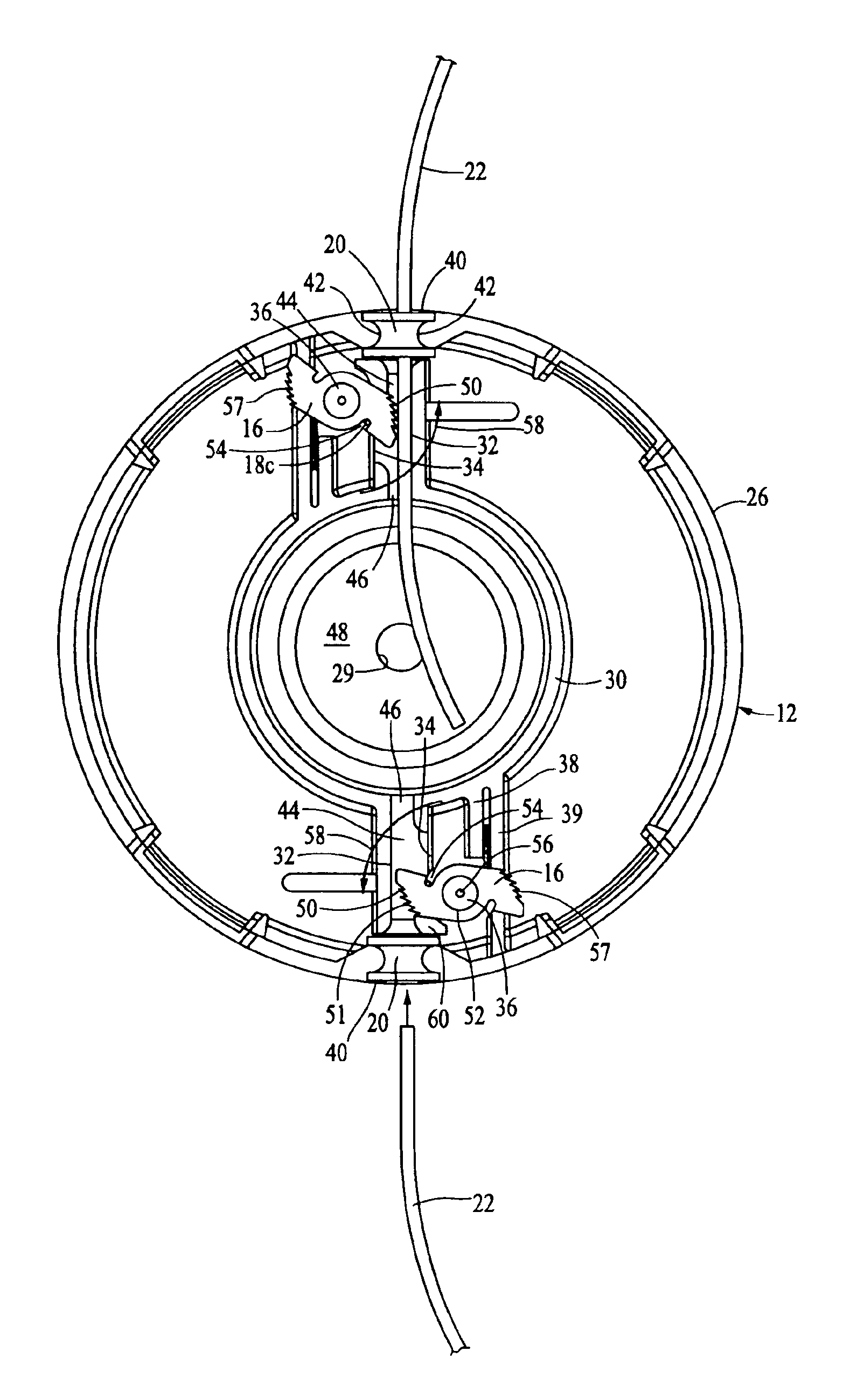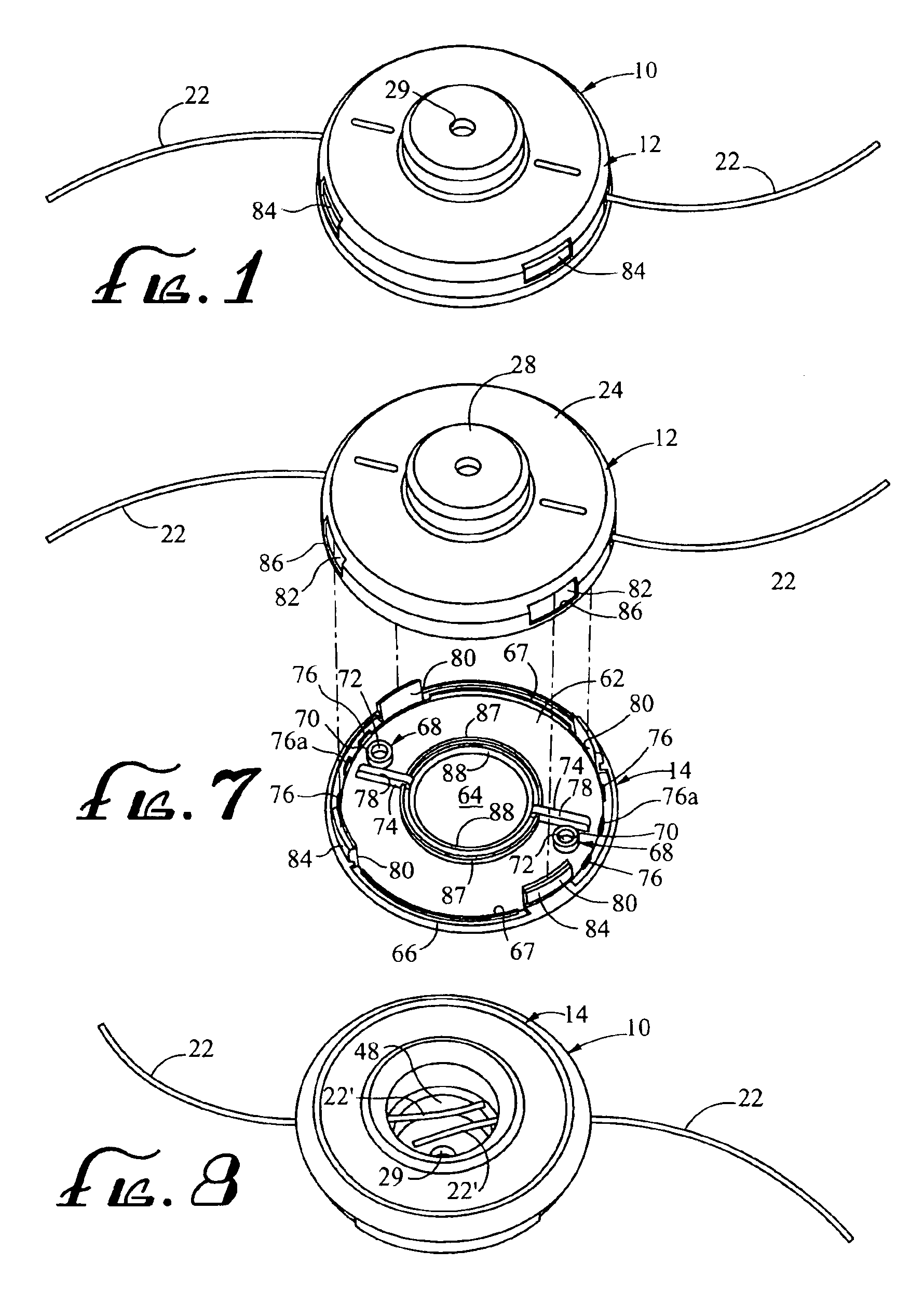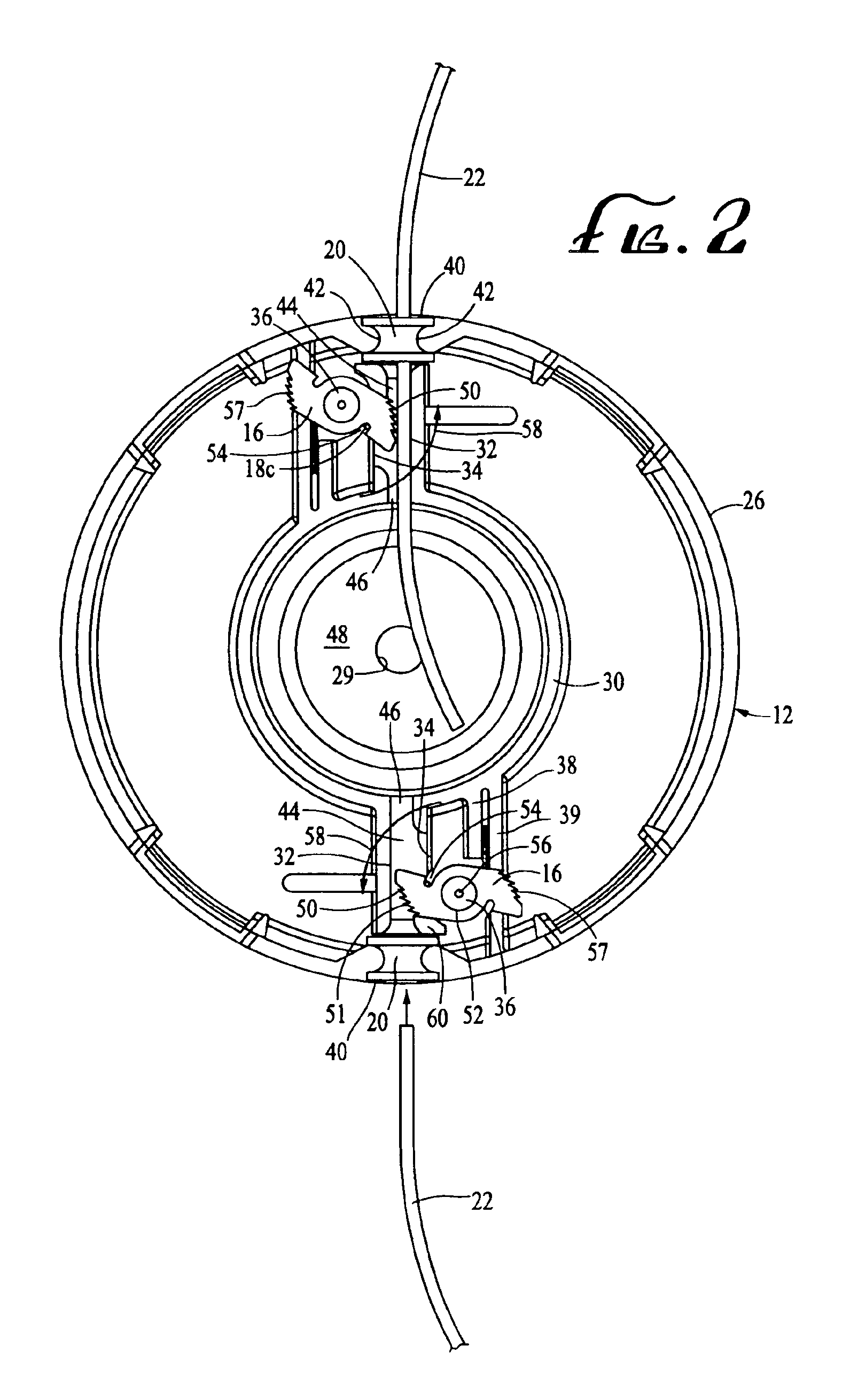Fixed line head for flexible line rotary trimmers
a flexible line and rotary trimmer technology, applied in the field of cutting heads, can solve the problems of time and effort of operators, lack of flexibility, and resistance to advancement, and achieve the effects of simple construction, simplified line removal and replacement, and simple structur
- Summary
- Abstract
- Description
- Claims
- Application Information
AI Technical Summary
Benefits of technology
Problems solved by technology
Method used
Image
Examples
second embodiment
[0043]In an improved second embodiment, the lower cover 14 is additionally provided with arcuate walls 75a and 75b disposed on opposite sides of the annular projections 68 with walls 75a merging into wall portion 74 and arcuate walls 75b being connected to projection 68 via webs 77 as seen in FIG. 11. The upper surfaces of arcuate walls 75a and 75b are coplanar with the end surfaces 70 of projections 68 and thus bear against and help maintain the cams 16 in a horizontal disposition within head 10. Small arcuate relief areas 68a are provided in interior facing surfaces of projections 68 to accommodate the vertical leg portions 18c of torsion springs 18.
[0044]To secure the lower cover 14 to the housing 12, the cover is provided with a plurality of axially extending resilient locking tabs 80 that are adapted to be received in openings 82 formed in the perimeter wall 26 of housing 12. Tabs 80 are each provided with an outwardly projecting tapered portion 84, as seen in FIG. 9, so that w...
first embodiment
[0058]The particular angular orientations of the individual teeth on cam 116 are illustrated in detail in FIG. 14B. In that regard it should be noted, that the pointed line engagement teeth in cam 16 are uniformly spaced along the end surface of the cam and are oriented such that all of the teeth projecting into the adjacent channel 44 project at increasing angles of inclination with respect to the support wall, from the outermost tooth 50a to the innermost blunt tooth 53. In cam 116, the teeth are relatively uniformly spaced apart, however, tooth 150c, while inwardly inclined with respect to the wear resistant surface of support wall 132 is not as inclined with respect to that surface as its outwardly adjacent tooth 150b. Such a configuration has been found to provide excellent line engaging characteristics. In addition, the innermost tooth 150h, which is pointed and not blunt like the innermost tooth on cam 16, is not as inclined with respect to the support wall surface as its inw...
PUM
 Login to View More
Login to View More Abstract
Description
Claims
Application Information
 Login to View More
Login to View More - R&D
- Intellectual Property
- Life Sciences
- Materials
- Tech Scout
- Unparalleled Data Quality
- Higher Quality Content
- 60% Fewer Hallucinations
Browse by: Latest US Patents, China's latest patents, Technical Efficacy Thesaurus, Application Domain, Technology Topic, Popular Technical Reports.
© 2025 PatSnap. All rights reserved.Legal|Privacy policy|Modern Slavery Act Transparency Statement|Sitemap|About US| Contact US: help@patsnap.com



